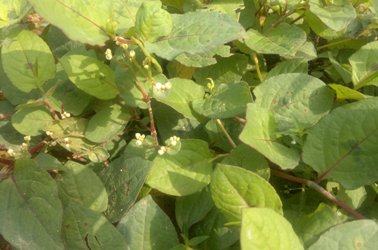Any question related Diabetes Email HERE |
OTHERS TREATMENT Neuro Acupuncture Herbal Treatment |
|
Infertility and Concieving problem Leukaemia and blood cancer problem Aplastic anaemia , Blood's Yin Deeficiency, Purpura Chronic pancreatitis, High cholesterol level (hypercholesterolaemia) |
![]()


DIABETES
WHAT IS DIABETES MELLITUS?
Diabetes Mellitus is a common metabolic endocrinopathy resulting from absolute or relative deficiency of insulin and leading to metabolic disturbance of carbohydrate, fat and protein. The disease is frequently followed by water-electrolyte imbalance and acid-base disturbance. According to the age of the patients, clinical manifestations and requirements for insulin, diabetes can be divided into many types. In Acupuncture, this disease is defined as 'xiao ke' which means diabetes.
CLINICAL DIAGNOSIS
1. The characteristics of a typical case of diabetes mellitus are often polyphagia, polydipsia, polyuria and loss of body weight. Early or asymptomatic patients only show abnormal release of cortical hormone and insuline inside the body. The level of fasting blood sugar is elevated with abnormal glucose tolerance test. Symptomatic patients are frequently complicated by other symptoms of dermal, neural and endocrinous disorders, besides polyphogia, polyuria and loss of body weight.
2. The main complications and concomitant diseases of diabetes mellitus are diabetic ketoacidosis, cardiovascular diseases, diabetic renopathy and peripheral neuropathy. Cardiovascular complications are the chief causes of death.
3. Diabetes mellitus is classified into juvenile and adult types according to the clinical features. The age of onset of the juvenile type is young and has a tendency to inheritance. Blood sugar fluctuates widely and is quite sensitive to insulin. Treatment is difficult and it is often named insulin-depending diabetes or unstable diabetes. The age of onset of adult type is above 40. This type is relatively mild and can be controlled by dietary restriction or oral antidiabetics. Therefore it is also named non- insulin depending diabetes or stable diabetes.
4. Accessory examination
a) Fasting blood-glucose is higher than 130 mg. Blood glucose after meal is more than 160-180 mg. Urine is positive for glucose. If complicated by ketosis, urine is positive for ketone bodies.
b) Glucose tolerance test can be used to diagnose early or suspected cases and is the principle test in diagnosis.
c) New diagnostic techniques such as testing blood insulin levels are quite helpful in understanding the pathological changes of pancreas and in obtaining information concerning treatment.
TYPES OF SYNDROMES
1. Dryness-heat in the Lung and Stomach Main Symptoms : Restlessness, polydipsia, polyphagia with tendency to hunger, dryness of the mouth and tongue, polyuria, red tongue with yellowish fur, slippery and rapid pulse.
2. Deficiency of the Kidney Main Symptoms : Polyuria with turbid discharge, soreness and debility of the lumbus, dryness of the mouth and tongue, dyshopria with feverish sensation in the chest, palms and soles, red tongue, deep, thready and rapid pulse.
WHAT IS DIABETES INSIPIDUS?
The syndrome is caused by heposecretion of antidiuretic hormone resulting from hypothalamus-pituitary lesion. It can also be secondary to other diseases. The state of illness may be mild or severe, transient or permanent. The disease belongs to the category of 'xiao ke' in Acupuncture.
CLINICAL DIAGNOSIS
1. Polyuria, polydipsia and increased water intake are the principle features. If water intake is restricted, severe dehydration may occur.
2. The etiology of primary diabetes insipidus remains indeterminate. Secondary cases may be initiated by tumor, infection or trauma of the hypothalamus-pituitary system or the adjacent tissues.
3. Accessory examination
a) The specific gravity of urine is reduced and usually less than 1.006. The osmotic prnsipidus from psychogenic polydipsia and polyuria.
b) The osmotic pressure of plasma is elevated. There may appear dizziness, dysphoria, tachycardia or disorder of consciousness, the so-called hyperosmotic syndrome.
c) Water-deprivation test and hypertonic saline test are used to distinguish diabetes insipidus from psychogenic polydipsia and polyuria. Water- deprivation test is dangererous, and now is rarely performed.
TYPES OF SYNDROMES
Deficiency of the Kidney-qi. Main Symptoms : Polydipsia, frequent and profuse urination, emaciation, aching pain in the lumbus, lassitude. The case exhibiting more symptoms and signs of deficiency of the kidney-yin is marked as feverish sensation in the palms and soles, restlessness, red tongue with little fur, deep, thready and rapid pulse; while the case presenting more symptoms and signs of deficiency of the kidney-yang is manifested as light colour urine, aversion to cold, impotence, pale tongue with whitish fur, and deep, thready and weak pulse.
WikiTole: https://thetole.org/wikitole/
Online Shop : www.thetole.org/shop
Online Consultation : https://thetole.org/Shop/product/consultation/
![]()
DIABETES HERBAL TREATMENT CURE
Diabetes is a set of related diseases in which the body cannot regulate the amount of sugar (glucose) in the blood.
About 17 million Americans (6.2%) are believed to have diabetes. About one third of those do not know they have it.
Many infections are associated with diabetes, and infections are frequently more dangerous in someone with diabetes because the body's normal ability to fight infections is impaired.
| :: CLICK HERE FOR MORE VIDEO :: |
The Star Newspaper (Malaysia)
"Neuro-acupuncture, a branch of acupuncture that claims can improve symptoms in children having conditions such as autism, attention deficit disorder, learning disabilities, attention deficit hyperactivity disorder and cerebral palsy." - A well-known acupuncturist and herbalist in Kuala Lumpur. |
